COMSOL Events Calendar
Modeling Workflow
Electromagnetics
Structural & Acoustics
Fluid & Heat
Chemical
Interfacing
General
Show as:
Time zone:
My Time (EDT)
Host Time
08:00 AM - 08:00 PM
Showing events starting between: 8 a.m. – 8 p.m.
Search
Upcoming Events
Loading Events
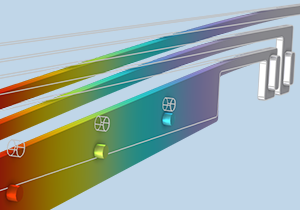
Apr 16–19
| 11:00 a.m. EDT
Introduction to COMSOL Multiphysics®
COMSOL
Training Course
Online
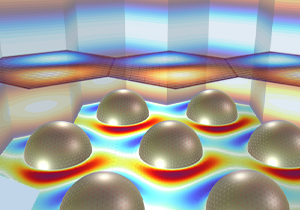
Apr 23
| 8:00 a.m. CEST
Wave & Ray Optics Modeling with COMSOL®
COMSOL
Webinar
Online
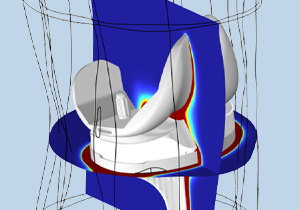
Apr 24
| 2:00 p.m. EDT
Electromagnetic Heating Simulation – Emerging Medical Applications
Tech Briefs
Webinar
Online
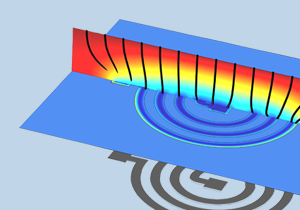
Apr 30–May 2
| 11:00 a.m. EDT
Electrochemistry & Electrodeposition Modeling in COMSOL Multiphysics®
COMSOL
Training Course
Online
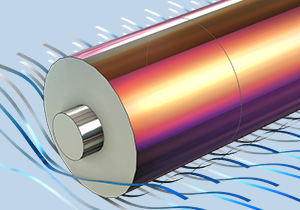
May 2
| 10:00 a.m. BST
The Thermal Parameterisation and Modelling of Lithium-ion Batteries
IMechE
Webinar
Online
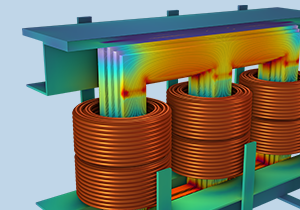
May 2
| 11:00 a.m. EDT
COMSOL Multiphysics Seminar - Together with CMC Microsystems
COMSOL
Seminar
Online
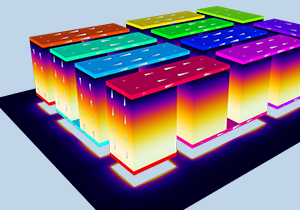
May 7
| 8:00 a.m. CEST
Equation-Based Modeling with COMSOL®
COMSOL
Webinar
Online

May 7
| 11:30 a.m. EDT
The Basics of COMSOL Multiphysics® in 18 Minutes
COMSOL
Webinar
Online
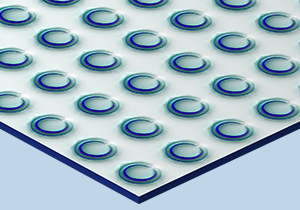
May 9
| 2:00 p.m. EDT
Simulating Plasmonics and Metamaterials Using COMSOL Multiphysics®
SPIE
Webinar
Online

May 14–17
| 11:00 a.m. EDT
Introduction to COMSOL Multiphysics®
COMSOL
Training Course
Online

May 14
| 11:30 a.m. EDT
Introducción a COMSOL Multiphysics® en 18 Minutos
COMSOL
Webinar
Online
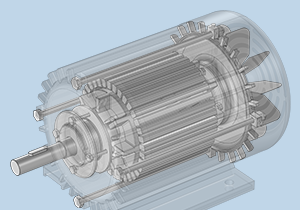
May 16
| 8:30 a.m. CEST
Modellare e gestire geometrie complesse
COMSOL
Webinar
Online
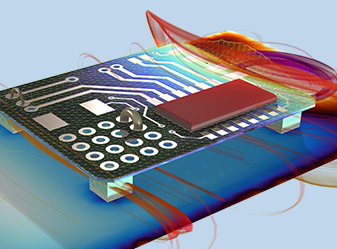
May 16
| 11:00 a.m. EDT
COMSOL Day: MEMS
COMSOL
COMSOL Day
Online

May 21
| 8:00 a.m. CEST
The Basics of COMSOL® in 18 Minutes
COMSOL
Webinar
Online
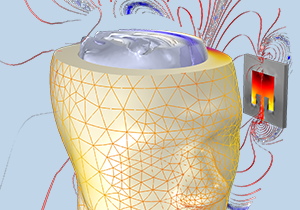
May 21
| 8:30 a.m. CEST
Digital twin e modelli surrogati: un passo verso il futuro
COMSOL
Webinar
Online
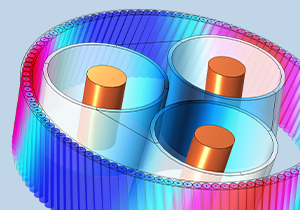
May 21
| 2:00 p.m. EDT
Modeling Cable Design & Power Electronics
IEEE Spectrum
Webinar
Online
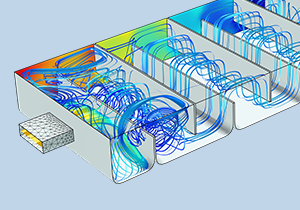
Jun 4
| 8:00 a.m. CEST
CFD Modeling with COMSOL® in 18 Minutes
COMSOL
Webinar
Online
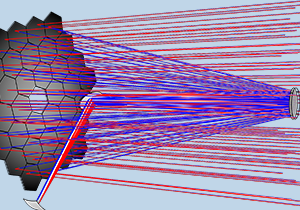
Jun 4–7
| 11:00 a.m. EDT
Wave & Ray Optics Modeling in COMSOL Multiphysics®
COMSOL
Training Course
Online
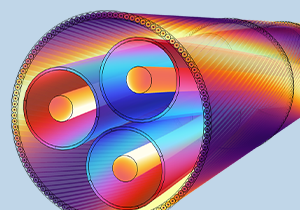
Jun 18
| 8:00 a.m. CEST
Modeling Cables with COMSOL® in 18 Minutes
COMSOL
Webinar
Online

Jun 18–21
| 11:00 a.m. EDT
Introduction to COMSOL Multiphysics®
COMSOL
Training Course
Online

Jul 23–26
| 11:00 a.m. EDT
Introduction to COMSOL Multiphysics®
COMSOL
Training Course
Online
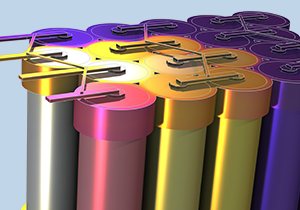
Aug 6–9
| 11:00 a.m. EDT
Battery Modeling in COMSOL Multiphysics®
COMSOL
Training Course
Online

Aug 27–30
| 11:00 a.m. EDT
AC/DC Modeling in COMSOL Multiphysics®
COMSOL
Training Course
Online

Oct 2–4
| 8:00 a.m. EDT
COMSOL Conference 2024 Boston
COMSOL
Conference
Burlington
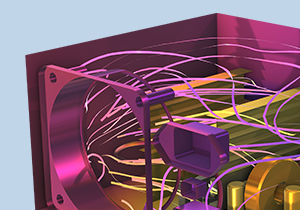
Oct 8–11
| 11:00 a.m. EDT
Heat Transfer Modeling in COMSOL Multiphysics®
COMSOL
Training Course
Online
Showing 8 of 25 events
Showing 25 of 25 events
| Date | Time | Title | Type | Host | Discipline |
|---|---|---|---|---|---|
| Apr 16–19 | 11:00 a.m. |
Introduction to COMSOL Multiphysics® |
Training Course | COMSOL-Online |
|
| Apr 23 | 8:00 a.m. |
Wave & Ray Optics Modeling with COMSOL® |
Webinar | COMSOL-Online |
|
| Apr 24 | 2:00 p.m. |
Electromagnetic Heating Simulation – Emerging Medical Applications |
Webinar | Tech Briefs - Online |
|
| Apr 30–May 2 | 11:00 a.m. |
Electrochemistry & Electrodeposition Modeling in COMSOL Multiphysics® |
Training Course | COMSOL-Online |
|
| May 2 | 10:00 a.m. |
The Thermal Parameterisation and Modelling of Lithium-ion Batteries |
Webinar | IMechE - Online |
|
| May 2 | 11:00 a.m. |
COMSOL Multiphysics Seminar - Together with CMC Microsystems |
Special Event | COMSOL-Online |
|
| May 7 | 8:00 a.m. |
Equation-Based Modeling with COMSOL® |
Webinar | COMSOL-Online |
|
| May 7 | 11:30 a.m. |
The Basics of COMSOL Multiphysics® in 18 Minutes |
Webinar | COMSOL-Online |
|
| May 9 | 2:00 p.m. |
Simulating Plasmonics and Metamaterials Using COMSOL Multiphysics® |
Webinar | SPIE - Online |
|
| May 14–17 | 11:00 a.m. |
Introduction to COMSOL Multiphysics® |
Training Course | COMSOL-Online |
|
| May 14 | 11:30 a.m. |
Introducción a COMSOL Multiphysics® en 18 Minutos |
Webinar | COMSOL-Online |
|
| May 16 | 8:30 a.m. |
Modellare e gestire geometrie complesse |
Webinar | COMSOL-Online |
|
| May 16 | 11:00 a.m. |
COMSOL Day: MEMS |
COMSOL Day | COMSOL-Online |
|
| May 21 | 8:00 a.m. |
The Basics of COMSOL® in 18 Minutes |
Webinar | COMSOL-Online |
|
| May 21 | 8:30 a.m. |
Digital twin e modelli surrogati: un passo verso il futuro |
Webinar | COMSOL-Online |
|
| May 21 | 2:00 p.m. |
Modeling Cable Design & Power Electronics |
Webinar | IEEE Spectrum - Online |
|
| Jun 4 | 8:00 a.m. |
CFD Modeling with COMSOL® in 18 Minutes |
Webinar | COMSOL-Online |
|
| Jun 4–7 | 11:00 a.m. |
Wave & Ray Optics Modeling in COMSOL Multiphysics® |
Training Course | COMSOL-Online |
|
| Jun 18 | 8:00 a.m. |
Modeling Cables with COMSOL® in 18 Minutes |
Webinar | COMSOL-Online |
|
| Jun 18–21 | 11:00 a.m. |
Introduction to COMSOL Multiphysics® |
Training Course | COMSOL-Online |
|
| Jul 23–26 | 11:00 a.m. |
Introduction to COMSOL Multiphysics® |
Training Course | COMSOL-Online |
|
| Aug 6–9 | 11:00 a.m. |
Battery Modeling in COMSOL Multiphysics® |
Training Course | COMSOL-Online |
|
| Aug 27–30 | 11:00 a.m. |
AC/DC Modeling in COMSOL Multiphysics® |
Training Course | COMSOL-Online |
|
| Oct 2–4 | 8:00 a.m. |
COMSOL Conference 2024 Boston |
Special Event | COMSOL-Burlington |
|
| Oct 8–11 | 11:00 a.m. |
Heat Transfer Modeling in COMSOL Multiphysics® |
Training Course | COMSOL-Online |
|
Trainings by Certified Consultants
On-Demand Webinars
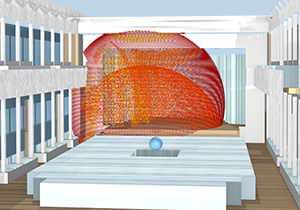
Modeling Room Acoustics with COMSOL Multiphysics®
Webinar
Apr 18
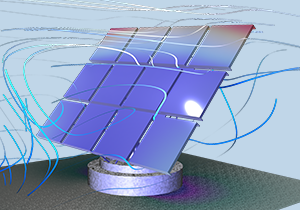
COMSOL Multiphysics® 中的流固耦合仿真
Webinar
Apr 18
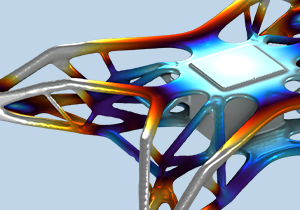
Additive manufacturing e simulazione: la chiave per l'innovazione
Webinar
Apr 17
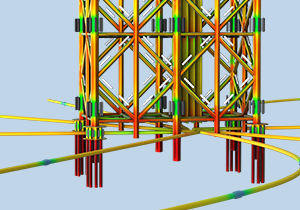
Modéliser la Corrosion et les Systèmes de Protection contre la Corrosion avec COMSOL Multiphysics®
Webinar
Apr 16
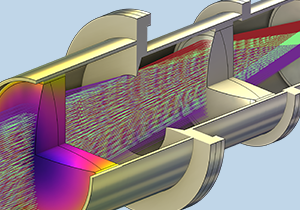
STOP Analysis with COMSOL Multiphysics®
Webinar
Apr 11
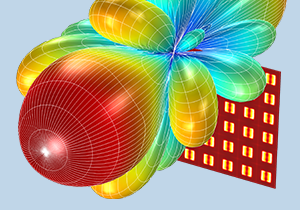
多尺度电磁波仿真
Webinar
Apr 11
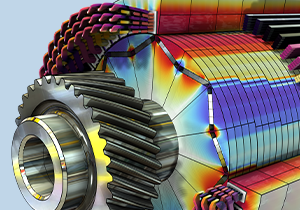
COMSOL® 微执行器和微型电机仿真
Webinar
Apr 02
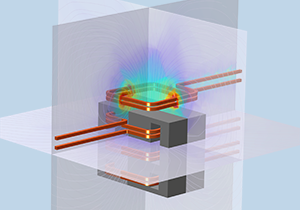
Modeling and Simulation of Power Electronics
Webinar
Mar 28

Advancing Future Energy Storage and Conversion Technologies with Simulation
Webinar
Mar 28
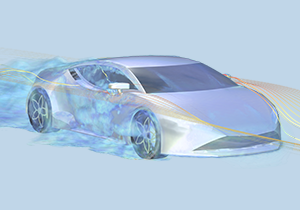
COMSOL® 中的湍流仿真
Webinar
Mar 26

Modeling Optical Nanostructures with COMSOL Multiphysics®
Webinar
Mar 21

Progettare motori elettrici più efficienti con la simulazione
Webinar
Mar 21
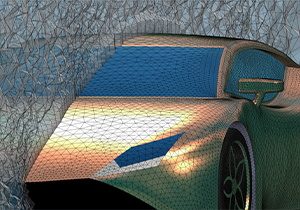
Comment construire un Maillage personnalisé dans COMSOL Multiphysics®
Webinar
Mar 21
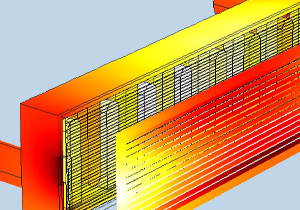
Designing RF Launchers for Nuclear Applications using COMSOL Multiphysics®
Webinar
Mar 20

Modeling Corrosion using COMSOL Multiphysics®
Webinar
Mar 15

Multiphysics Modeling of Electrical Motors
Webinar
Mar 14

Améliorer la Gestion Thermique des Batteries avec COMSOL Multiphysics®
Webinar
Mar 14

COMSOL® 仿真在电力电子技术中的应用
Webinar
Mar 14
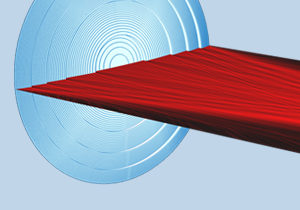
Modeling Optics and Photonics in COMSOL®
Webinar
Mar 13
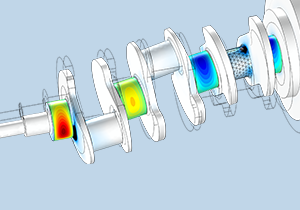
COMSOL® 中的流体动压轴承仿真
Webinar
Mar 12

使用 COMSOL Multiphysics® 模拟 EMI/EMC 现象
Webinar
Mar 07
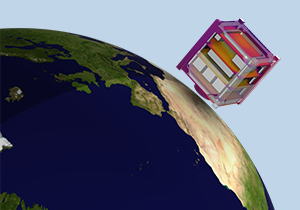
COMSOL® 中的热辐射仿真
Webinar
Mar 05
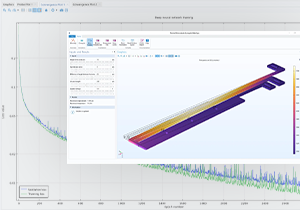
Training Surrogate Models to Build Faster Simulation Apps
Webinar
Feb 29
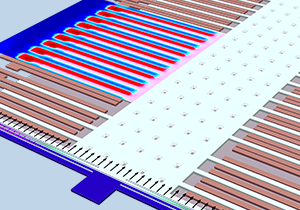
使用 COMSOL Multiphysics® 模拟 MEMS 加速度计和陀螺仪
Webinar
Feb 29
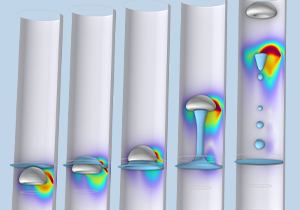
Microfluidics Modeling in COMSOL Multiphysics®
Webinar
Feb 22
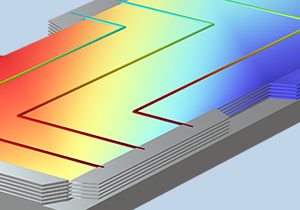
Simulare le tecnologie dell'idrogeno: dagli elettrolizzatori alle fuel cell
Webinar
Feb 20

Comment configurer le Solveur Temporel de COMSOL Multiphysics®
Webinar
Feb 20

Analyzing Spacecraft Thermal Performance with COMSOL®
Webinar
Feb 15
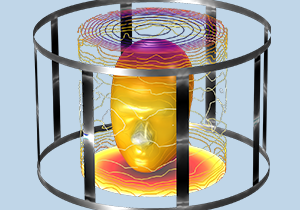
Modéliser les Dispositifs Médicaux avec COMSOL Multiphysics®
Webinar
Feb 15

Introducción a COMSOL Multiphysics® en 18 Minutos
Webinar
Feb 13
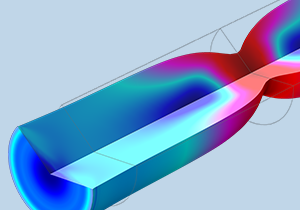
Parameter Estimation for Nonlinear Materials
Webinar
Feb 08
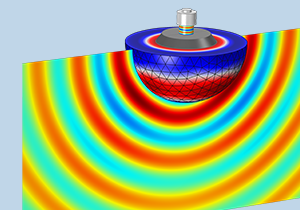
Modeling Electroacoustic Transducers
Webinar
Feb 07

The Basics of COMSOL Multiphysics® in 18 Minutes
Webinar
Feb 06
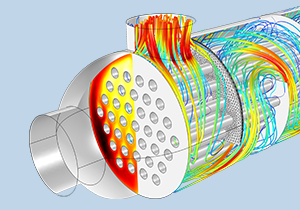
Simulare fenomeni di convezione
Webinar
Jan 30
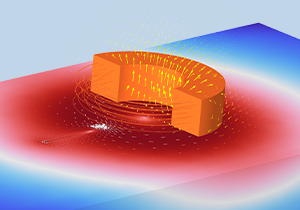
Modeling Eddy Current Inductive Sensors in COMSOL®
Webinar
Jan 25
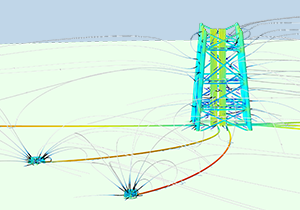
在 COMSOL Multiphysics® 中模拟腐蚀及防护系统
Webinar
Jan 25
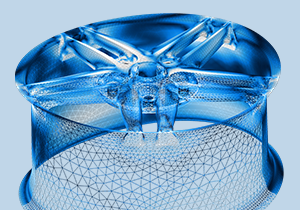
Comment configurer le Solveur Stationnaire de COMSOL Multiphysics®
Webinar
Jan 23
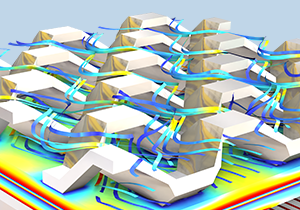
Améliorer les Performances des Piles à Combustible et des Electrolyseurs avec COMSOL Multiphysics®
Webinar
Jan 18

Multiphysics Simulation for Solar Energy Applications
Webinar
Jan 18

使用 COMSOL® 模拟等离激元效应和超材料
Webinar
Jan 18
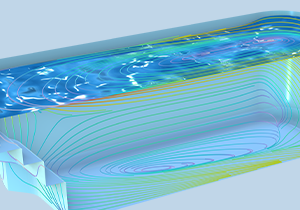
Cosa c'è di nuovo in COMSOL Multiphysics® 6.2
Webinar
Jan 16

半导体封装和测试中的多物理场仿真
Webinar
Jan 11
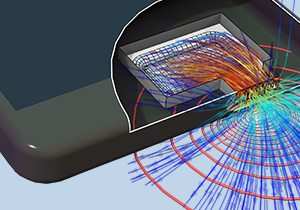
COMSOL® 中的扬声器和麦克风仿真
Webinar
Jan 04

使用 COMSOL Multiphysics® 进行结构-热-光学耦合分析
Webinar
Dec 21

Modeling Magnetic Cores in Transformers and Electric Machines using COMSOL Multiphysics®
Webinar
Dec 20

Improving Electric Drivetrain Efficiency with Multiphysics Simulation
Webinar
Dec 15
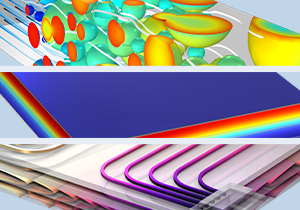
Battery Modeling with COMSOL Multiphysics®
Webinar
Dec 14
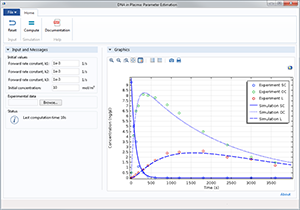
Comment faire de l’Estimation de Paramètres avec COMSOL Multiphysics®
Webinar
Dec 14
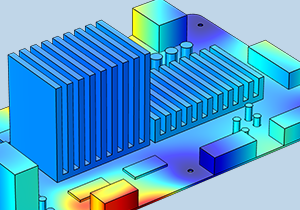
Multiphysics Modeling of Electronic Components
Webinar
Dec 07
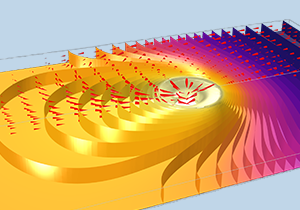
Modélisation Multiphysique des Procédés de Soudage, de Fabrication Additive et de Découpe Laser
Webinar
Dec 07
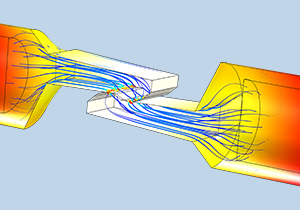
Modellare gli accoppiamenti multifisici nelle analisi strutturali
Webinar
Dec 05
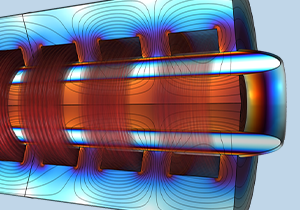
COMSOL® 多物理场仿真在电气绝缘中的应用
Webinar
Dec 05
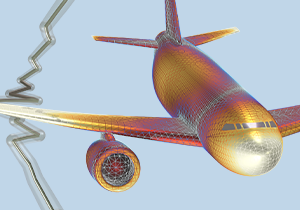
Lightning Strikes: Insights and Solutions Using Multiphysics Modeling
Webinar
Dec 01
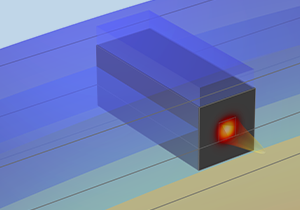
Design and Optimization of Optical Waveguides
Webinar
Nov 30
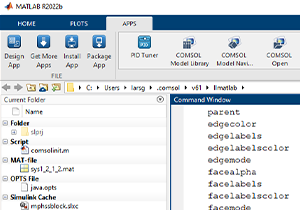
How to Interface COMSOL Multiphysics® with MATLAB®
Webinar
Nov 30
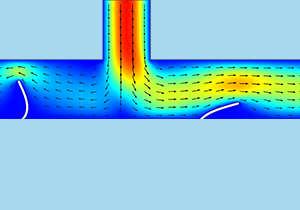
微流体器件的多物理场仿真
Webinar
Nov 30

半导体制造中的晶体生长仿真
Webinar
Nov 28

Progettare sistemi elettrici ed elettronici per l'automotive
Webinar
Nov 23
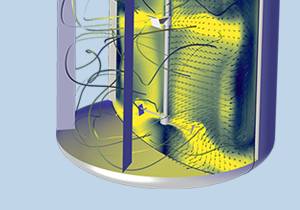
Modéliser les Procédés Pharmaceutiques avec COMSOL Multiphysics®
Webinar
Nov 23
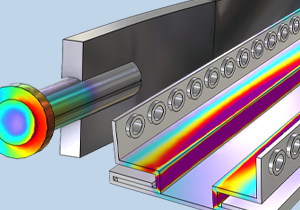
Advancing Rail Technology Innovation with COMSOL Multiphysics®
Webinar
Nov 22

COMSOL® 多物理场仿真在医疗设备研发中的应用
Webinar
Nov 21
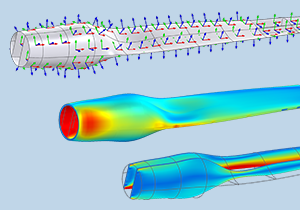
Unlocking the Future: How Digital Twins Are Revolutionizing Our World
Webinar
Nov 16

COMSOL® 中的网格划分
Webinar
Nov 16
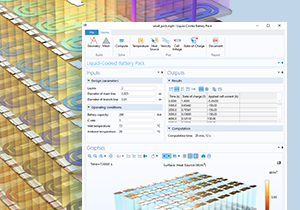
Unire mondo reale e virtuale con i digital twin
Webinar
Nov 15

锂离子电池热失控仿真
Webinar
Nov 14

COMSOL® 中的磁流体仿真
Webinar
Nov 09

Modeling Optical Nanostructures with COMSOL Multiphysics®
Webinar
Nov 08

Multiphysics Simulation for Enhanced Electric Drivetrain Efficiency
Webinar
Nov 07

Adapting the Electrical Grid for Green Energy
Webinar
Nov 02

COMSOL® 地下水流及多孔介质流仿真
Webinar
Nov 02
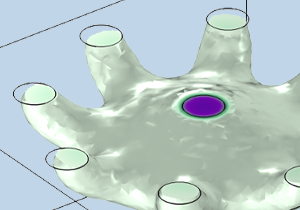
Simulating Light-Tissue Interaction using COMSOL Multiphysics®
Webinar
Oct 31

电磁噪声的仿真分析
Webinar
Oct 31
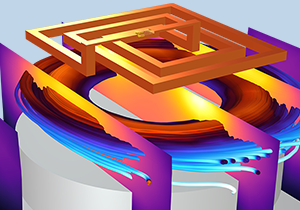
使用 COMSOL Multiphysics® 仿真 PVD/CVD 薄膜沉积工艺
Webinar
Oct 27

Dal flusso laminare al turbolento: tecniche di simulazione per la CFD
Webinar
Oct 25

Learn About Simulating Plasmonics and Metamaterials
Webinar
Oct 24

COMSOL® 多物理场仿真优化电缆设计
Webinar
Oct 20

Modeling Cables with COMSOL® in 18 Minutes
Webinar
Oct 19

Modéliser le Rayonnement Thermique
Webinar
Oct 19

COMSOL® 的求解器简介
Webinar
Oct 13
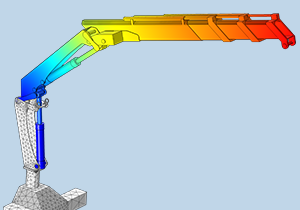
Comment transformer vos modèles en applications de simulation
Webinar
Oct 12
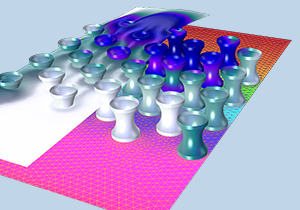
Trasporto e termodinamica nelle simulazioni chimiche
Webinar
Oct 11

Modeling and Simulation of Power Electronics
Webinar
Oct 05
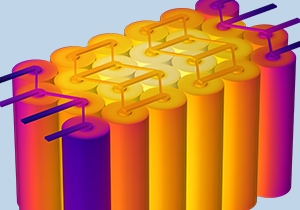
Battery Modeling with COMSOL Multiphysics®
Webinar
Oct 03

Comment Exploiter efficacement vos Résultats de Simulation
Webinar
Sep 28
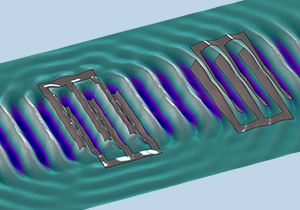
Simulating Band Gaps and Scattering in Phononic Crystals with COMSOL Multiphysics®
Webinar
Sep 28
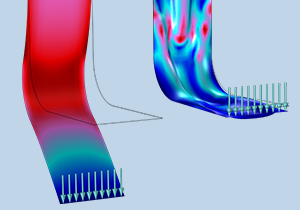
Design Optimization for Engineering Problems — from Nanophotonics to Civil Infrastructure
Webinar
Sep 27

Machine learning e simulazione: una coppia vincente
Webinar
Sep 27

Improving Electric Drivetrain Efficiency with Multiphysics Simulation
Webinar
Sep 26
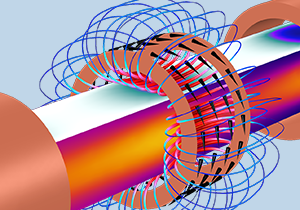
COMSOL® 中的感应加热仿真
Webinar
Sep 26

Modeling MEMS Accelerometers Using COMSOL Multiphysics®
Webinar
Sep 21

Modéliser la Corrosion et les Systèmes de Protection contre la Corrosion avec COMSOL Multiphysics®
Webinar
Sep 21

Come scegliere i materiali per la resistenza meccanica
Webinar
Sep 20
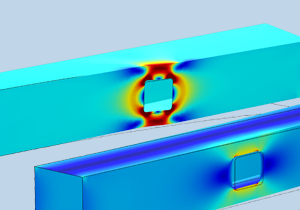
COMSOL® 中的岩土力学仿真
Webinar
Sep 19
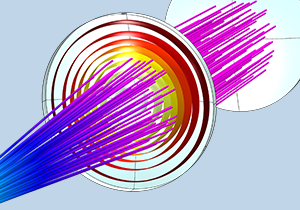
多物理场仿真在激光加工中的应用
Webinar
Sep 15

计算流体力学(CFD)多物理场仿真
Webinar
Sep 12

使用 COMSOL® 求解大型模型
Webinar
Sep 08

Modeling Reaction Kinetics and Pharmacokinetics with COMSOL®
Webinar
Sep 07
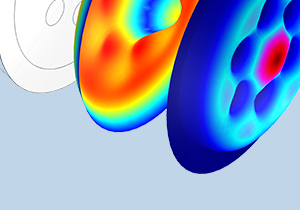
COMSOL® 中的声学超材料仿真
Webinar
Sep 05
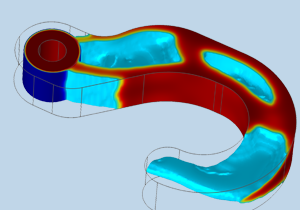
使用 COMSOL Multiphysics® 进行设计优化
Webinar
Sep 01

Reducing the Need for Physical Prototyping with Sensor Design
Webinar
Aug 31

Multiphysics Modeling of Manufacturing Processes Using COMSOL®
Webinar
Aug 31
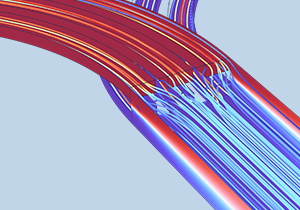
Semplifica la gestione dei modelli con il Model Manager
Webinar
Aug 31

Comment utiliser des fonctionnalités du COMSOL Desktop® pour gagner en efficacité
Webinar
Aug 31
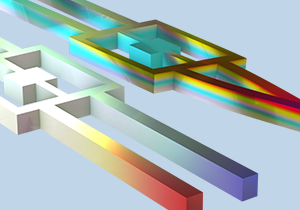
COMSOL® 的压电材料和器件仿真
Webinar
Aug 29

COMSOL® 中的变压器仿真
Webinar
Aug 25
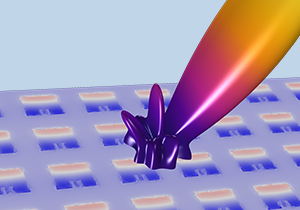
Multiphysics Modeling and Simulation for 5G Devices
Webinar
Aug 24

Lightweighting in EVs with Multiphysics Simulation
Webinar
Aug 23

COMSOL® 中的半导体器件仿真
Webinar
Aug 22

COMSOL® 中的锂电池仿真
Webinar
Aug 18

Multiphysics Software for Optics Simulation
Webinar
Aug 17

Using COMSOL Multiphysics® for Teaching in Academia
Webinar
Aug 16
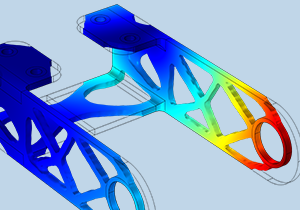
COMSOL® 的结构力学仿真
Webinar
Aug 15

COMSOL® 中的 LiveLink™ for MATLAB® 和 LiveLink™ for Simulink® 功能简介
Webinar
Aug 11

Optimization of Automotive Components with Multiphysics Simulation
Webinar
Aug 10

电子设备热管理的仿真分析
Webinar
Aug 04
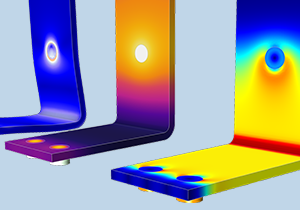
电磁损耗的仿真分析
Webinar
Jul 28

Multiphysics Modeling and Simulation for 5G Devices
Webinar
Jul 27

Fuel Cell Simulation with COMSOL Multiphysics®
Webinar
Jul 26

氢燃料电池与水电解槽的多物理场仿真
Webinar
Jul 25

COMSOL® 中的多相流仿真
Webinar
Jul 21

Modeling and Simulation of Power Electronics
Webinar
Jul 20

Comment Configurer le Solveur Temporel dans COMSOL Multiphysics®
Webinar
Jul 20

Condividi i tuoi modelli con le app di simulazione
Webinar
Jul 18
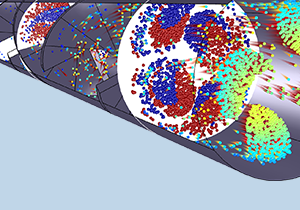
粒子追踪方法的建模仿真
Webinar
Jul 18

MEMS 器件的多物理场建模和仿真
Webinar
Jul 14
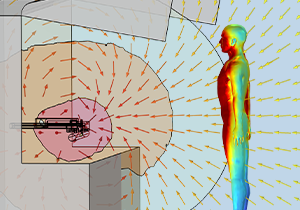
EMF Grenzwerte - Mehr Sicherheit am Arbeitsplatz durch Simulation
Webinar
Jul 12
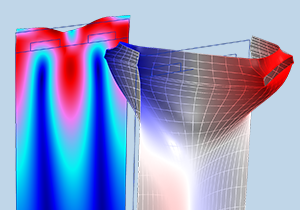
SAW 和 BAW 滤波器的建模仿真
Webinar
Jul 07

Modeling Turbulent Flow with COMSOL®
Webinar
Jul 06

Il ruolo della simulazione nel futuro del settore aerospaziale
Webinar
Jul 04

COMSOL® 中的电镀仿真
Webinar
Jul 04
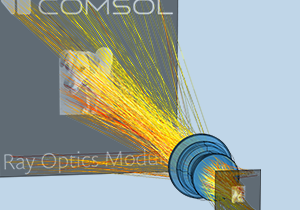
COMSOL® 中的射线光学仿真
Webinar
Jun 30

Comment transformer vos modèles en applications de simulation
Webinar
Jun 29

Modeling Speakers and Microphones in COMSOL Multiphysics®
Webinar
Jun 22

Modéliser l’emballement thermique des batteries avec COMSOL Multiphysics®
Webinar
Jun 22

Improving Battery Safety Design Using Thermal Management Modeling
Webinar
Jun 21

Modeling Thermal Runaway and Abuse in Batteries
Webinar
Jun 21

Warum Batterien modellieren?
Webinar
Jun 20

COMSOL® 中的热应力仿真
Webinar
Jun 16
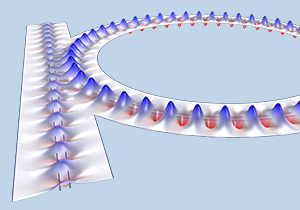
Modeling Optical Waveguides
Webinar
Jun 15

Thermal Management in Electronic Devices with COMSOL Multiphysics®
Webinar
Jun 15

Come modellare trattamenti termici
Webinar
Jun 14

Introdução ao COMSOL Multiphysics® em 18 minutos
Webinar
Jun 13
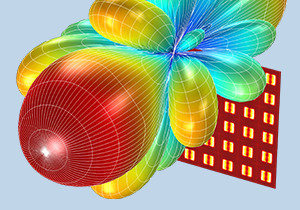
COMSOL® 中的高频电磁场仿真
Webinar
Jun 13

COMSOL® 中的流固耦合仿真
Webinar
Jun 09

Progettare tecnologie per eolico e solare
Webinar
Jun 07

The Basics of COMSOL Multiphysics® in 18 Minutes
Webinar
Jun 06

Brennstoffzellen und Elektrolyseure modellieren in 18 Minuten
Webinar
Jun 06

COMSOL® 中的传热仿真
Webinar
Jun 06

COMSOL® 中的腐蚀与防护仿真
Webinar
Jun 02

STOP Analysis with COMSOL Multiphysics®
Webinar
May 31
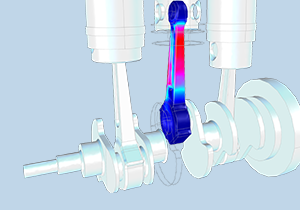
Fatigue and Durability Analysis of Automotive Components
Webinar
May 31

Introducción a COMSOL Multiphysics® en 18 Minutos
Webinar
May 30

Modeling Periodic Structures in RF and Optics
Webinar
May 30
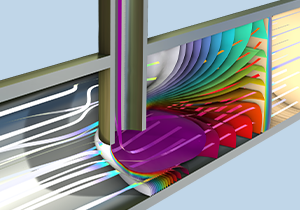
Introduction to Chemical Reactor Modeling with COMSOL Multiphysics®
Webinar
May 25

Comment configurer le Solveur Stationnaire
Webinar
May 25
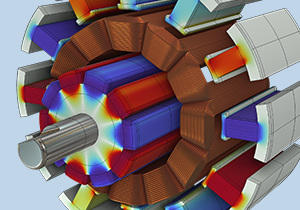
COMSOL® 中的低频电磁场仿真
Webinar
May 23

在 COMSOL® 中进行 CAD 导入及几何模型处理
Webinar
May 19

Modeling Electric Motors and Drivetrains
Webinar
May 18

Modeling Magnetohydrodynamic Flow in COMSOL®
Webinar
May 18
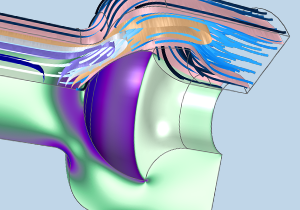
Studiare il comportamento reologico dei fluidi
Webinar
May 18

Improving Electric Drivetrain Efficiency with Multiphysics Simulation
Webinar
May 17

COMSOL® 中的复合材料仿真
Webinar
May 16
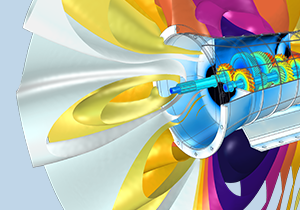
声学与振动的多物理场仿真
Webinar
May 12
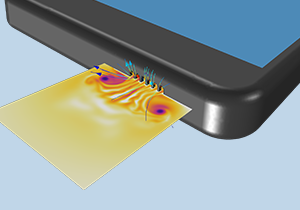
Simulare suono e rumore
Webinar
May 11

Améliorez les Performances de vos Piles à Combustible avec COMSOL Multiphysics®
Webinar
May 11

Modeling Corrosion Processes and CP Systems with COMSOL Multiphysics®
Webinar
May 10

Modellare sistemi ottici in contesti multifisici
Webinar
May 04
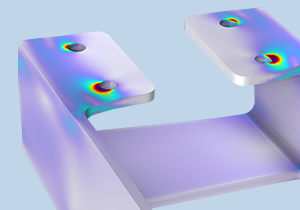
Introduction to Uncertainty Quantification in COMSOL Multiphysics®
Webinar
May 03

Comment Améliorer vos Processus de Modélisation grâce au Gestionnaire de Modèles
Webinar
Apr 27

Modeling Corrosion Processes and Cathodic Protection Systems with COMSOL Multiphysics®
Webinar
Apr 25

Concevoir des Moteurs Electriques Performants à l’Aide de la Modélisation Multiphysique
Webinar
Apr 20
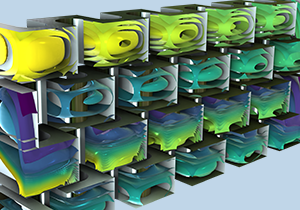
COMSOL® 化学反应工程仿真
Webinar
Apr 18

光学超材料仿真
Webinar
Apr 14
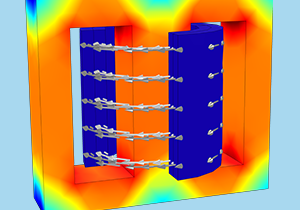
电力设备的多物理场仿真
Webinar
Apr 07
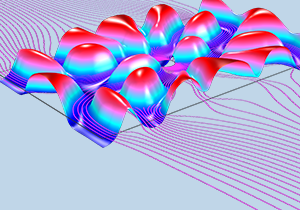
在 COMSOL® 中使用自定义函数建模
Webinar
Mar 31

COMSOL® 6.1 电磁模拟新功能
Webinar
Mar 24

COMSOL® 6.1 电池模块新功能
Webinar
Mar 17
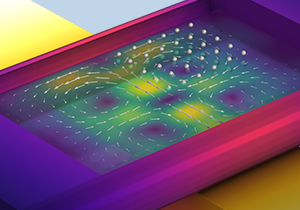
COMSOL® 中的声流仿真
Webinar
Mar 10

COMSOL Multiphysics® 波动光学仿真
Webinar
Mar 07
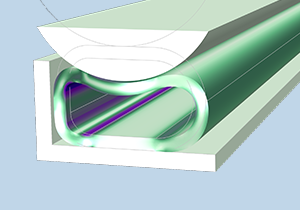
COMSOL® 6.1 结构力学模块新功能
Webinar
Mar 03
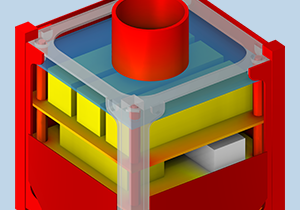
如何使用 COMSOL® 分析航天器热性能
Webinar
Feb 24

COMSOL® 6.1 模型管理器和 App 开发器新功能介绍
Webinar
Feb 17

COMSOL® 6.1 燃料电池和电解槽模块新功能
Webinar
Feb 10

COMSOL® 6.1 声学模块新功能
Webinar
Feb 03
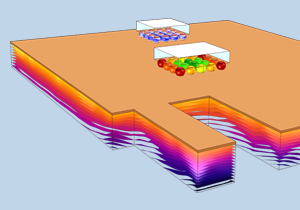
Best Practices for Results and Visualization
Webinar
Jan 18

在 COMSOL® 中基于方程进行建模仿真
Webinar
Jan 13
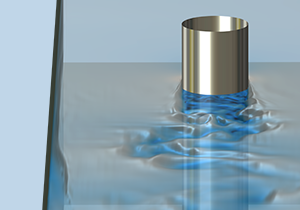
COMSOL® 6.1 CFD 模块新功能
Webinar
Jan 06

COMSOL LiveLink™ for MATLAB® 功能简介
Webinar
Dec 30
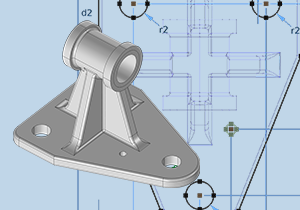
在 COMSOL® 中创建二维几何模型
Webinar
Dec 23
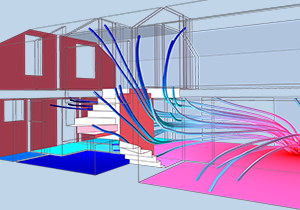
声学超材料的建模和仿真
Webinar
Dec 16

在 COMSOL® 中进行结果后处理与可视化
Webinar
Dec 09

使用 COMSOL® 多物理场仿真优化光学系统设计
Webinar
Nov 25

燃料电池中的多物理场仿真
Webinar
Nov 18
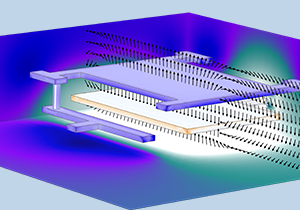
机电效应的多物理场建模和仿真
Webinar
Nov 11

COMSOL® 求解器简介
Webinar
Nov 04
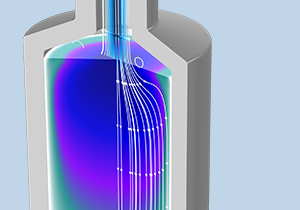
使用 COMSOL® 进行多孔介质流仿真
Webinar
Oct 28

COMSOL Multiphysics® 结构力学仿真
Webinar
Oct 14

Machine learning e simulazione: una coppia vincente
Webinar
Sep 27
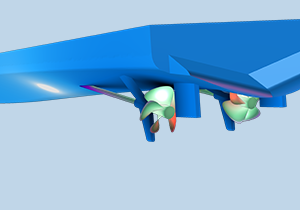
COMSOL 中的腐蚀与防护仿真
Webinar
Sep 16
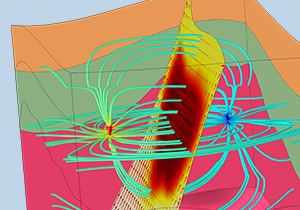
使用 COMSOL 对地质勘探方法进行建模仿真
Webinar
Sep 09

高频电磁场中的多物理场仿真
Webinar
Sep 02

通过 COMSOL 多物理场仿真进行设计优化
Webinar
Aug 26
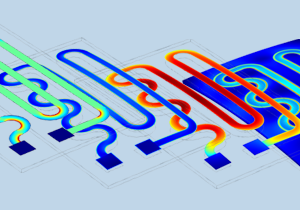
使用 COMSOL 评估 PCB 与射频器件的电磁性能
Webinar
Aug 19

通过 COMSOL 仿真分析减振降噪
Webinar
Aug 12
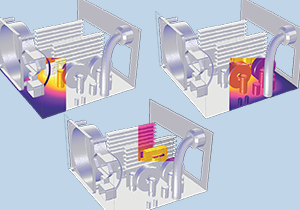
COMSOL 中的传热仿真
Webinar
Aug 05

使用 COMSOL 软件优化半导体器件设计
Webinar
Jul 29

电子设备的热管理仿真
Webinar
Jul 26
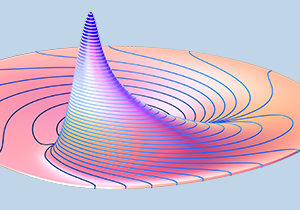
多物理场仿真在激光加工中的应用
Webinar
Jul 22

在 COMSOL 中求解大型模型
Webinar
Jul 19

计算流体力学(CFD)仿真分析
Webinar
Jul 15

相控阵列天线建模方法
Webinar
Jul 12

在 COMSOL 中构建网格的基本方法
Webinar
Jul 08

使用 COMSOL 进行热应力仿真
Webinar
Jul 01

NVH Analysis for Automotive Applications with Multiphysics Simulation
Webinar
Jun 22

COMSOL 多物理场仿真在地质开采中的应用
Webinar
Jun 17

Improving Battery Performance with Multiphysics Simulation
Webinar
Jun 15

锂电池的多物理场仿真分析
Webinar
Jun 10
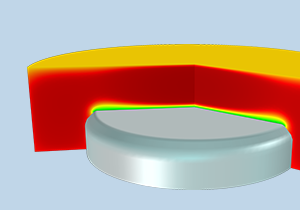
COMSOL 等离子体仿真简介
Webinar
May 27
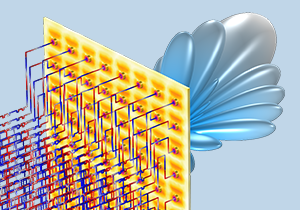
Electromagnetics Applications for Aerospace and Defense
Webinar
May 25

Designing Efficient Electric Motors with Multiphysics Simulation
Webinar
May 18
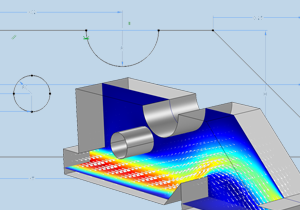
COMSOL 中几何文件的处理方法简介
Webinar
May 13
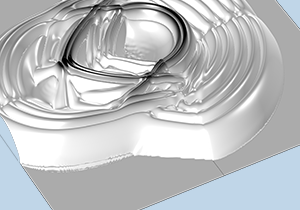
Modeling Nondestructive Testing Methods with COMSOL Multiphysics®
Webinar
Apr 27
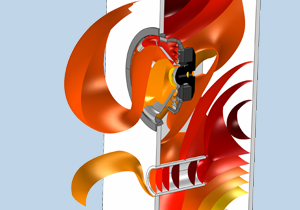
使用 COMSOL 多物理场仿真优化电声设备
Webinar
Apr 22
Showing 6 of 223 events
Showing 223 of 223 events
Trainings by Certified Consultants
- Product Information
- Products
- Specification Chart
- License Options
- System Requirements
- Release History
- Support and Services
- Support Center
- My Support Cases
- Knowledge Base
- Partners and Consultants
- Documentation
- Product Download
- Company
- About
- Careers
- Press
- Contact Us
- |
- Privacy Policy
- |
- Trademarks
- |
- Cookie Settings
- © 2024 by COMSOL. All rights reserved
